Updated
Archaeological Institute of America

Deadline: March 1, 2024
AIA Publication Grants will no longer have two application cycles. The deadline for all Publication Grant applications will be March 1.
The Archaeological Institute of America launched the Publications Subvention Program in 2005. This program offers subventions from the AIA’s von Bothmer Publication Fund in support of new book-length publications in the field of Classical Archaeology (defined as Greek, Roman, and Etruscan archaeology and art history). Particularly welcome are projects that publish the work of first-time authors or represent the publication of final reports of primary data from sites already excavated or surveyed, but are still unpublished. These subventions are not intended to support the publication of previously published works (including collections of previously published essays) or congress proceedings.
Grants are open to scholars and nonprofit publishers of all nations. To be eligible, applicants must be AIA members (Professional level) in good standing at the time of application. In the case of multi-authored or multi-edited publications, the AIA membership requirement applies only to the primary author/principal investigator.
Proposals should be submitted by eligible nonprofit publishers, such as university or museum presses. All manuscripts submitted for consideration must conform to AIA’s policies regarding the initial publication of undocumented antiquities.
The deadline for completed applications is March 1. Grants average $5,000, though smaller or larger amounts may be awarded at the discretion of the Committee.
The program is administered by the Publication Subvention Committee which is comprised of AIA members with scholarly expertise in the areas designated for the Grant.
The selected manuscripts will acknowledge the subvention with the following statement on the copyright page or on the reverse of the title page: “Publication of this book has been aided by a grant from the von Bothmer Publication Fund of the Archaeological Institute of America.” Below this statement must appear the logotype of the AIA (camera-ready or digital copy to be supplied by the Archaeological Institute of America). The subvention should also be acknowledged with this or a similar statement in announcements or publicity about the publication of the book, as well as in all advertisements insofar as possible.
The AIA welcomes applicants of all backgrounds and is committed to equal opportunity for all. Under no circumstances will the AIA discriminate against qualified individuals on the basis of race, color, religious creed, retaliation, national origin, ancestry, sexual orientation, gender, disability, mental illness, genetics, marital status, age, veteran status, or any other basis prohibited under applicable law.
Review the Follow-Up Check List for previous winners.
All applications must be made entirely online. The deadline for submission of all completed forms is March 1. Submissions made via regular mail, fax, or other means will not be accepted. There are four parts to the applications including a portion to be completed by the publisher. Please review the Guidelines and Required Information pages prior to completing the forms linked below.
Form I (to be completed by Primary Author)
Form II (to be completed by Publisher)
For information about supporting the AIA Publications Subvention Program, please contact Rebecca W. King.
2022
University of Southern California
Divine Music in Archaic and Classical Greek Art: Seeing the Songs of the Gods by Carolyn Laferrière, University of Southern Carolina, published by Cambridge University Press. In this study, Dr. Laferriere focuses on images of women, men, and gods who are engaged in musical activity, a theme found in the many images that have survived from antiquity. The author analyzes how these depictions, though mute, convey musical melodies and rhythms to great poetic effect. Exploring the close connections between music and art in ancient Athens, her volume interrogates how ancient viewers perceived image and sound, and how human and divine music were represented, among other topics. It offers new insights into representations of divine music in the religious and social life of Archaic and Classical Athens.
2022
New York University
Unbinding Rome: Art and Craft in a Fluid Landscape, 700-200 BCE, by John North Hopkins, New York University, to be published in Fall 2023 by Yale University Press. This manuscript offers a new perspective on Roman architecture and society that aims to critique and break from past historical accounts. Roman society has often been largely defined by its incredible feats in architectural expansion and innovation; the art and architecture commissioned by the elite class, with the city of Rome at the center of the republic, and ultimately the empire being seen as the origin for aesthetic choices that rippled outward. The reality is that Rome’s political boundaries were fluid and everchanging, and its peoples were part of an extensive network of trade and communication in the wider Mediterranean. Unbinding Rome fights against the homogenous conception of Rome that has in part been driven by an overreliance on elite production and the textual record, instead calling for a methodology that better casts a light on the lesser-known actors and movements that helped produce it. He points obviously to the diverse and historically rich Mediterranean world that existed long before the rise of the Romans and the ways in which much of Roman society was borrowed or adapted from cultural practices which existed first in that region. Unbinding Rome will mark a transition point in the ways in which scholars have looked at the diversity of production within the political boundaries of Republican Rome.
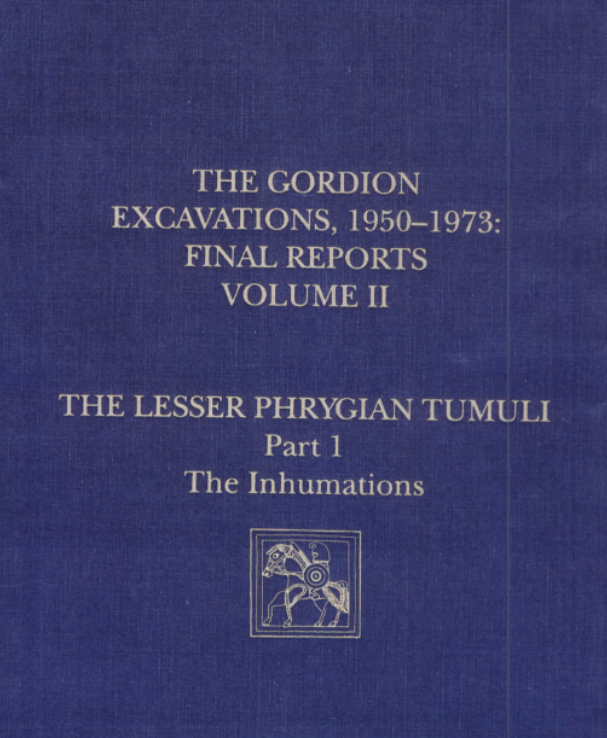
2022
University of Colorado
The Gordion Excavations, 1950-1973: Final Reports Volume II. The Lesser Phrygian Tumuli Part II: The Cremations, by Elspeth R. M. Dusinberre, University of Colorado, co-authored by E. L. Kohler, E. Baughan, A. Berlin, G. Darbyshire, J. Hickman, B. Keslinke, P. Sheftel, M. Vassileva and published by Penn Museum Publications. This book fits into two long-standing published series, as the completion of Volume II of The Gordion Excavations (1950–1973) Final Reports (Volume II, Part 1 was by Kohler on Phrygian inhumation tumuli) and Museum Monographs (number 158). Dusinberre took over the revamping and updating of Kohler’s manuscript and has done a masterful job. This book presents a comprehensive look at a set of cremation tumuli at Gordion and complements the previous study of the inhumation Lesser Phrygian tumuli. Gordion is unusual, if not unique, in having contemporaneous cremation and inhumation burial traditions. This important work complements the previous study, broadening knowledge and access to comparanda. The Subvention Grant the costs for the extra binding of the hefty two-volume set and either a bellyband or slipcase to keep these two books together.
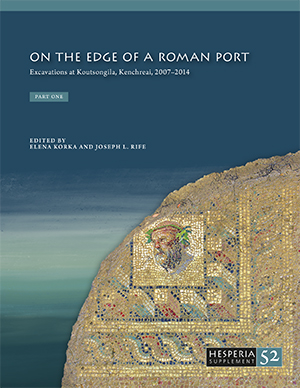
2022
Vanderbilt University
On the Edge of a Roman Port: Excavations at Koutsongila, Kenchreai, 2007-2014, by Joseph L. Rife, Vanderbilt University, co-edited by Elena Korka and published by American School of Classical Studies. This volume presents the final results of a Greek-American project, conducted between 2007 and 2014, on Koutsongila Ridge at Kenchreai, one of the ports of ancient Corinth. The project explored an array of Early Roman to Early Byzantine buildings and burials, revealing abundant evidence not only for the history of activity in a transitional urban/suburban landscape, but also for the society, economy, and religion of local residents. The Subvention Grant will support the cost of nine color signatures and three black-and-white foldouts, as well as the costs associated with splitting the volume into two (cover printing and binding of part 2).
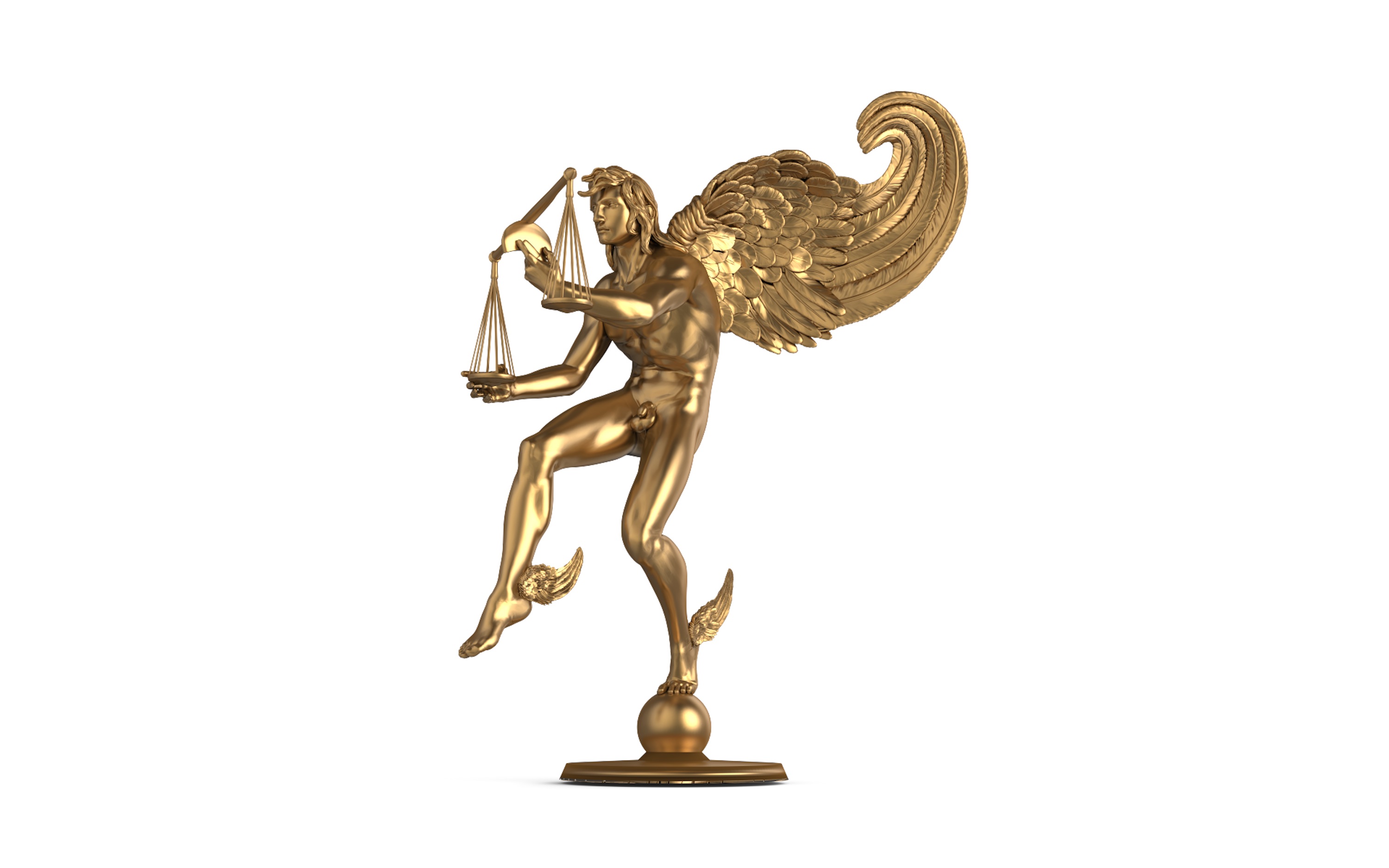
2021
University of Toronto
The Temporal Revolution in Ancient Greek Art, by SeungJung Kim, University of Toronto, published by Cambridge University Press. This volume explores the depiction of time and temporality in the visual arts produced in late archaic and classical Greece. Contextualizing her study within a broader cultural history of time, the author examines changing notions of time in this period, as reflected in a new set of subjects and pictorial strategies that appear in art works from the start of the fifth century BCE. The study serves as an important alternative to the art historical understanding of the “Greek revolution” of 480 BCE, which has focused primarily on stylistic developments. The Subvention Grant will support the extensive illustration program.
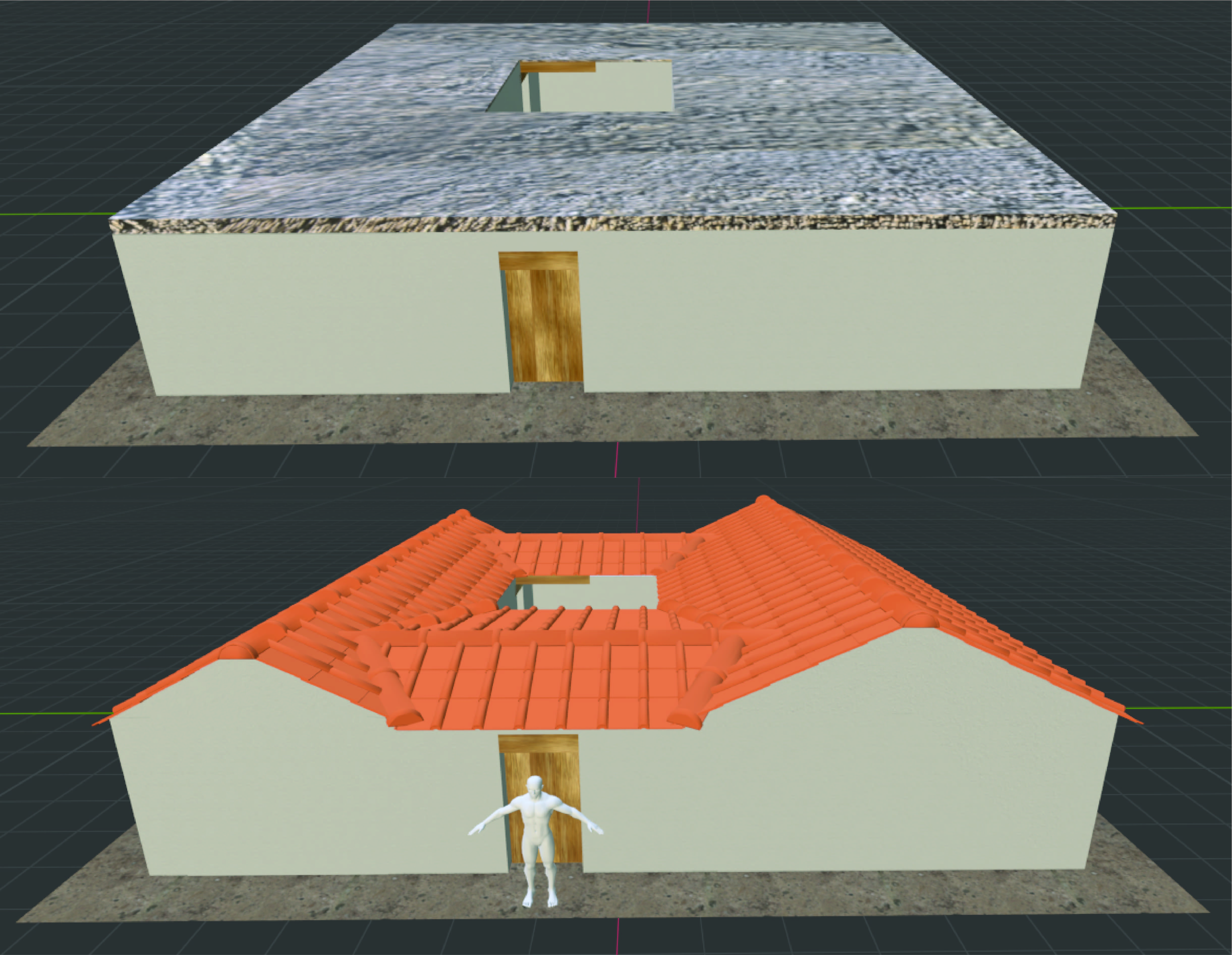
2021
University of Akron
Virtually Reconstructing the Past. Estimating Labour Costs through Digital Technologies, by Jerrad Lancaster, University of Akron. Archaeologists have long embraced technology in their practices; however, recent advancements in the function and form of three-dimensional (3D) technologies have progressed the capability of archaeological survey further in the last half-decade than ever before. The goals of this project and its resulting monograph, are multifold: to reconstruct an Archaic period Greek house at Kasmenai in southeast Greek Sicily, to utilize the models in volumetric and spatial analyses (i.e. architectural energetics), to highlight the advantages of this digital medium in the methodology, and to interpret the results into a socio- economic and historical context of the community at Kasmenai. The Subvention Grant will support the publication costs of the volume.
2021
University of Toronto
Male Nudity in the Greek Early Iron Age: Production, Representation, and Ritual Context in Aegean Societies, by Sarah C. Murray, University of Toronto, published by Cambridge University Press. This volume investigates the role of male nudity in Greek art between the Late Bronze Age and the 8th century BCE, showing how the practice of male nudity had complicated origins in rituals that date to the early Greek Iron Age. Dr. Murray’s study explores an aspect of early Greek civilization that has not been well understood: the existence of conflicting, regionally distinct ideologies regarding male nudity that coexisted during a period for which there is little textual evidence. The Subvention Grant will be used to cover the costs of the 16-pages of color plates.
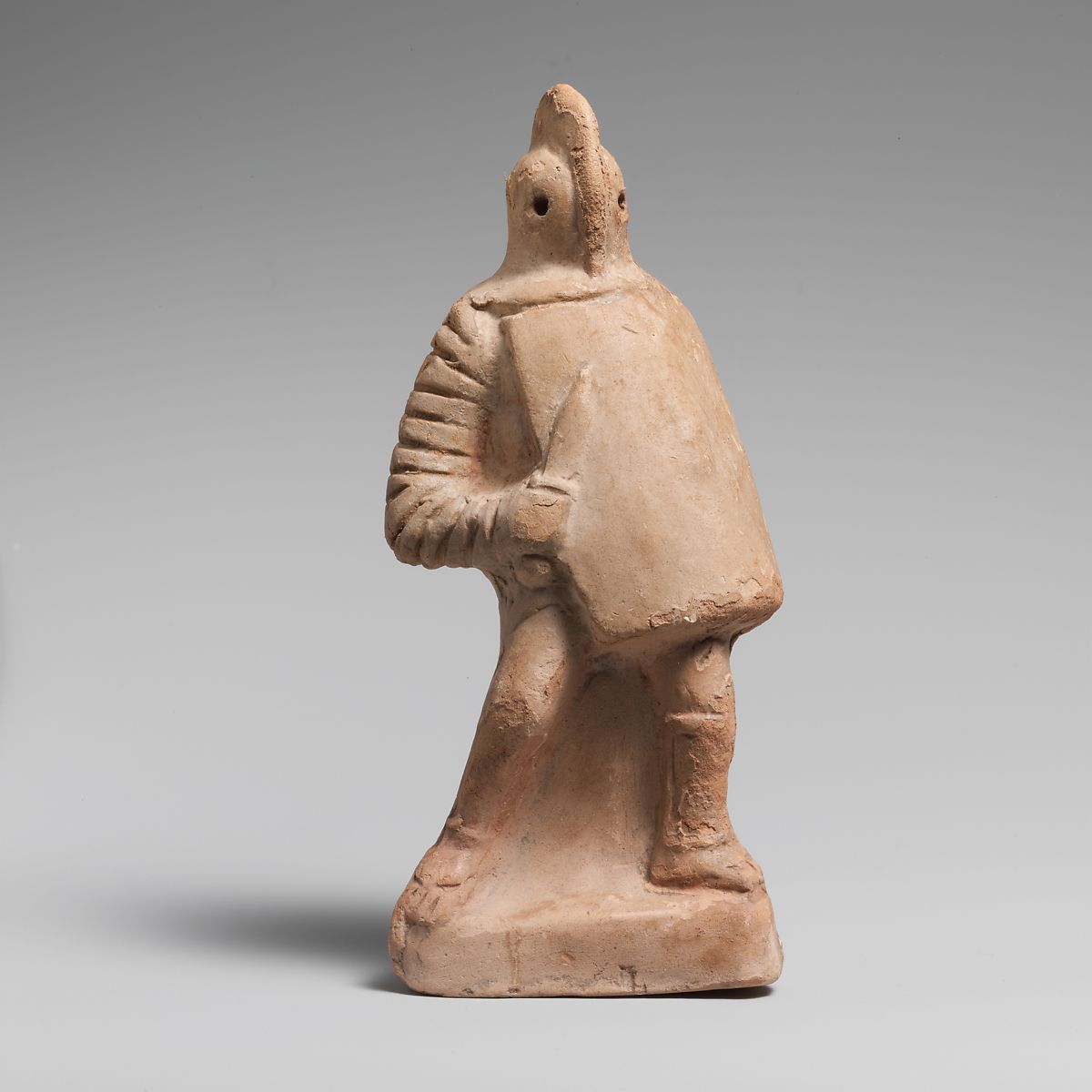
2021
Case Western Reserve University
Souvenirs and the Experience of Empire in Ancient Rome, by Maggie L. Popkin, Case Western Reserve University, published by Cambridge University Press. Dr. Popkin explores a category of objects – souvenirs – that were produced in the many regions that made up the Roman Empire. Portable, affordable, and widely accessible, they enabled many Romans to encounter a range of people, places, and events, and also served as an important means of mass communication, shaping memories and conceptions of Empire. Drawing on the methods of both art history and archaeology, Dr. Popkin’s book demonstrates how works of popular culture offer insight into Roman perceptions about social institutions and relationships. The Subvention Grant, along with funds from Case Western Reserve University, will allow this entire volume to be printed in color.
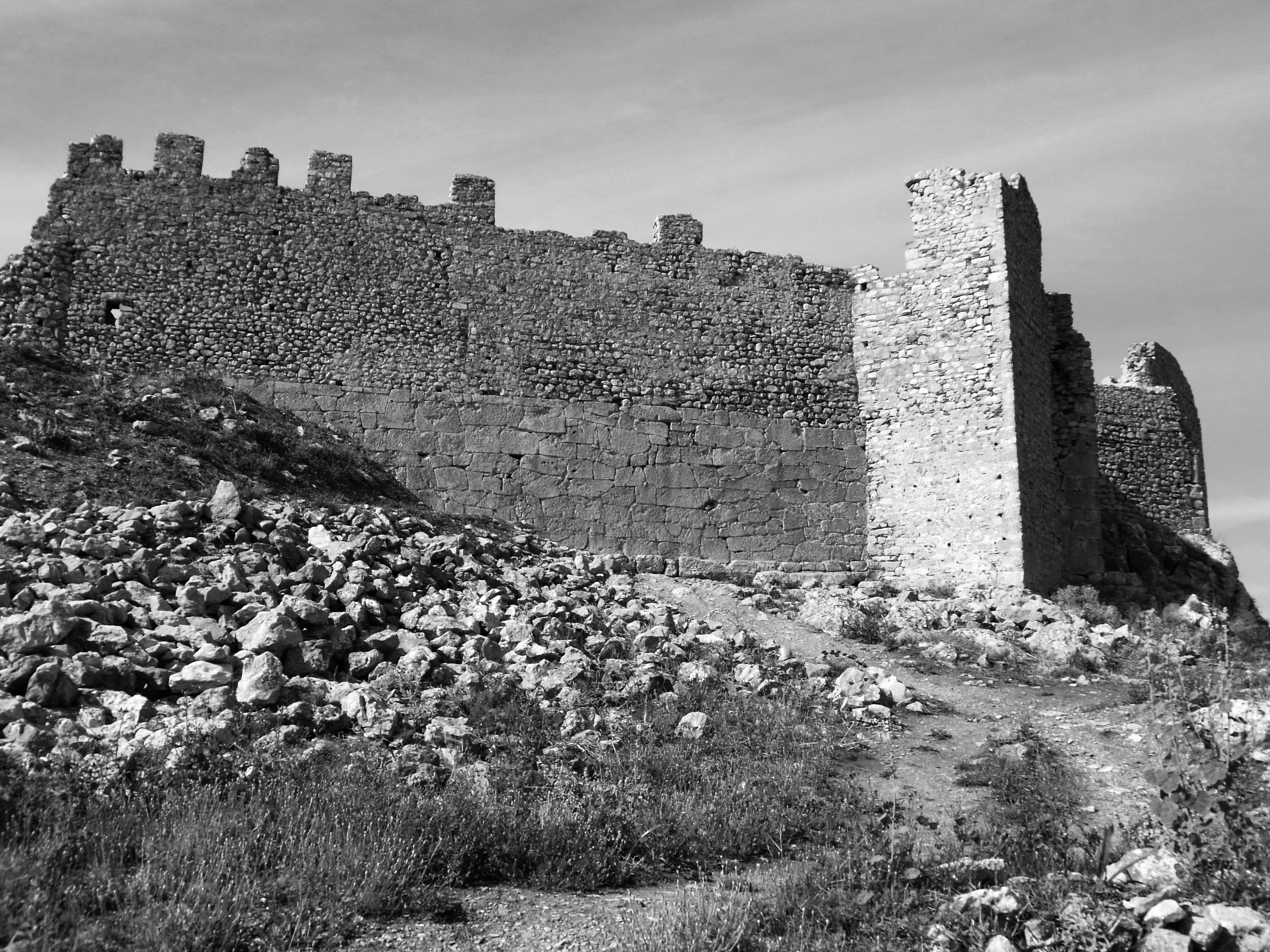
2020
University of Chicago
Reclaiming the Past: Argos and Its Archaeological Heritage in the Modern Era, by Dr. Jonathan M. Hall of the University of Chicago, published by Cornell University Press. The volume focuses on Argos in the Greek Peloponnese, one of the oldest continuously inhabited cities in the world, to accomplish two main objectives. The first is to track the history of Argos since antiquity, with particular focus on the period between the late 18th and the mid-20th centuries; the second is to examine the relationship between the post-antique town and its archaeological heritage through the eyes of both foreign visitors and residents. This second objective involves discussions of “pseudo-colonialism” and the navigation between ancient and mediaeval images of Greek self-perceptions, as well as issues of cultural heritage and the perennial tension between conservation of the past and development into the future. The subvention will assist with publication costs, particularly the extensive illustration program, and will help in making the volume accessible to scholars in North American and Europe (especially in Greece).
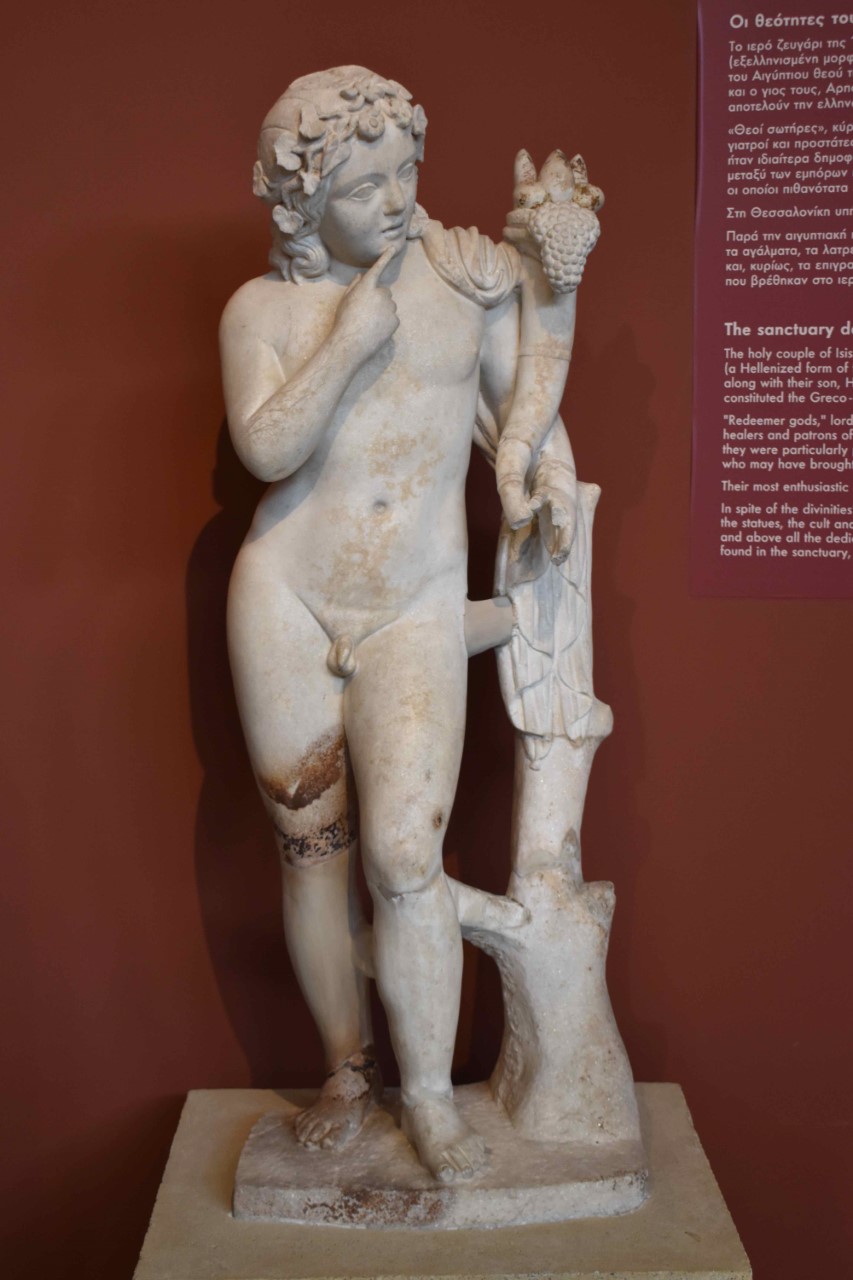
2020
Indiana University
Isis in a Global Empire: Greek Identity through Egyptian Religion in Roman Greece, by Lindsey Mazurek (Indiana University), published by Cambridge University Press. This volume explores Hellenic identity in a globalized Roman world. The author uses Egyptian cults on the Greek mainland as the lens through which the phenomenon can be discerned, showing how Plutarch, Apuleius, and other writers of the Second Sophistic assigned Isis and Sarapis to roles previously held by canonical Greek divinities, thereby placing Egyptian religion within the philosophical and cultural paradigms that form the core of Greek civilization. The visual culture of Roman Greece also played a predominant role in this cultural fiction, and depictions of Isis, Sarapis, and other deities in a classical style demonstrate how artists constructed visual arguments for the Greek ancestry of Egyptian gods and goddesses, and their rightful place in the Greek pantheon. The Subvention Grant will cover the cost of a 8-page section containing 16 color plates (color playing a critical role in supporting some of the author’ s arguments).
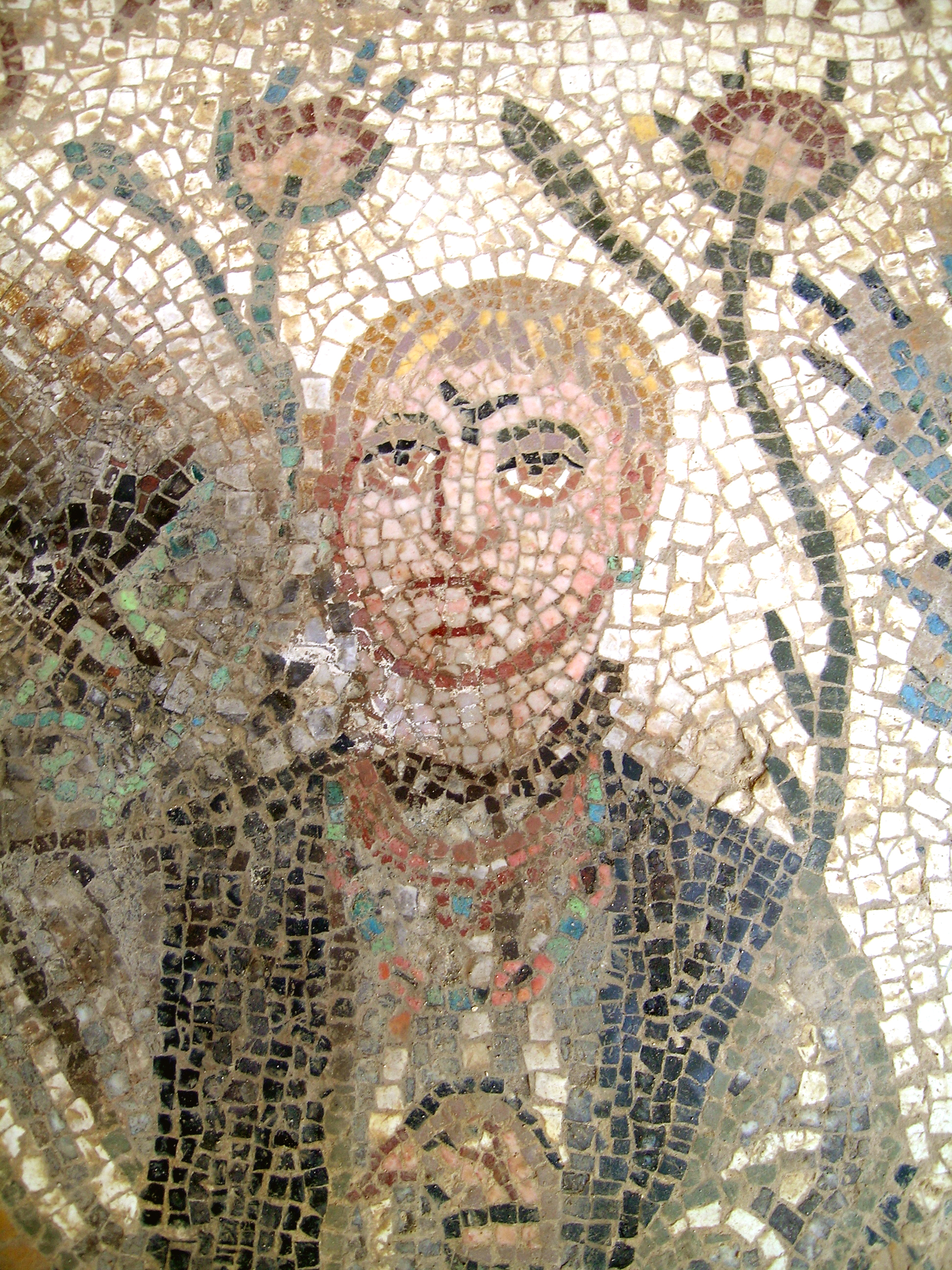
2020
University of Manitoba
Leptiminus (Lamta), Report no. 4. The East Cemetery: Stratigraphy, Ceramics, Non-ceramic Finds and Bio-archaeological Studies, co-edited by Lea Stirling (University of Manitoba), Nejib Ben Lazreg (Institut National du Patrimoine, Tunisia), and Jennifer Moore (Trent University, Canada), published by the Journal of Roman Archaeology(JRA Supplement 110). The volume represents the culmination of many years of work and research on the Roman cemetery at Leptiminus, including detailed presentation of artifacts and ceramics, ecofacts, and stratigraphy mostly from the ‘pagan’ sector of the cemetery, and supplemented by a report on the exquisite tomb mosaics of the Christian sector. Extensive synthesis ties the findings into broader social and archaeological issues and situates the burial practices at this cemetery within Roman North Africa on a comprehensive scale. The volume is receiving both an AIA Publication Subvention Grant and an AIA Samuel H. Kress Grant for Research and Publication in Classical Art and Architecture, and the funds will support publication costs, including color illustrations throughout.
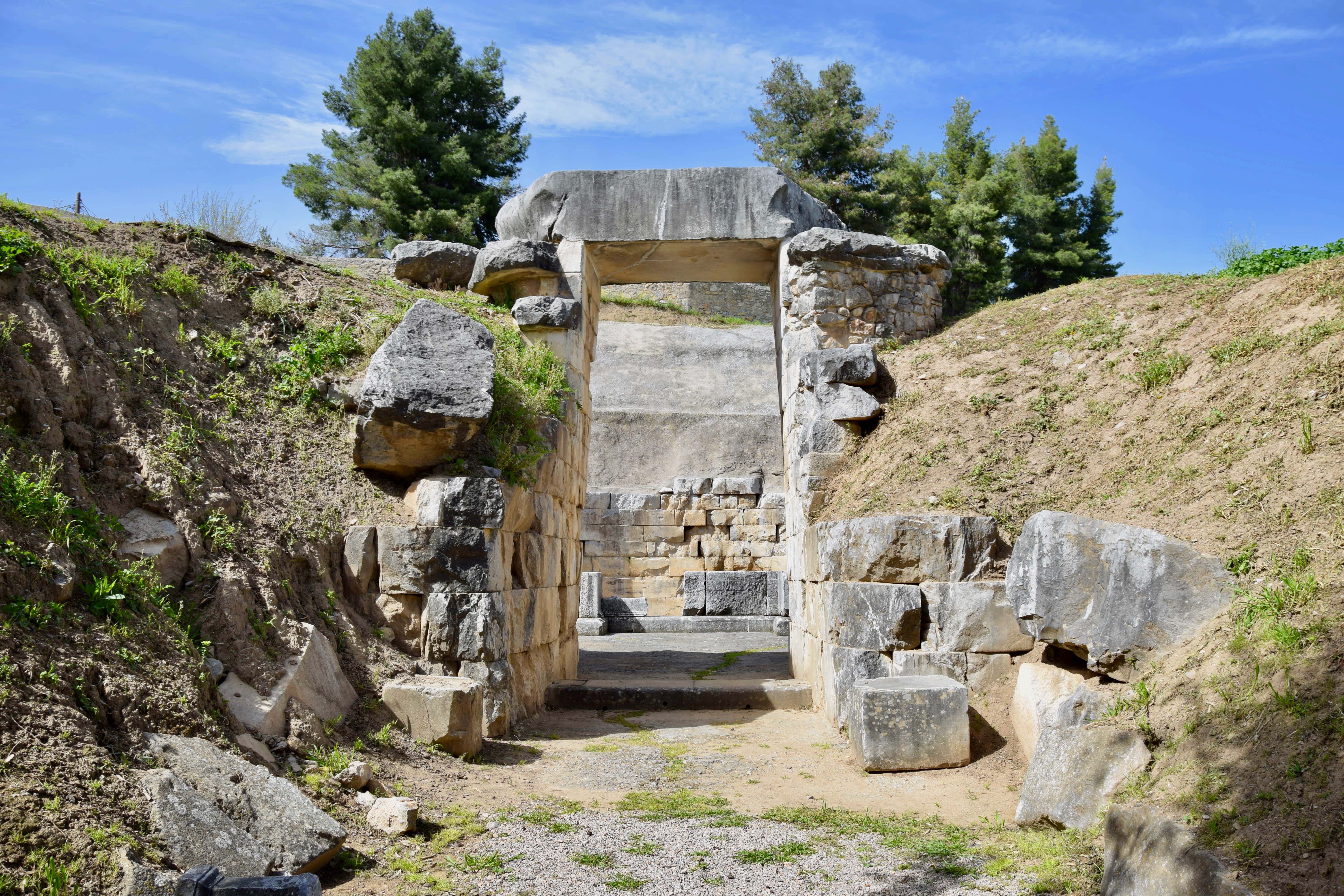
2020
Carleton College
Societies in Transition in Early Greece, by Dr. Alex R. Knodell of Carleton College, published by University of California Press. This volume presents a new synthesis for Late Bronze Age and Early Iron Age Greece, examining societal developments throughout this often-overlooked period between prehistory and history, and using a three-pronged approach of landscape, interaction, and social complexity. The subvention will cover costs including the volume’s increased length and art program.
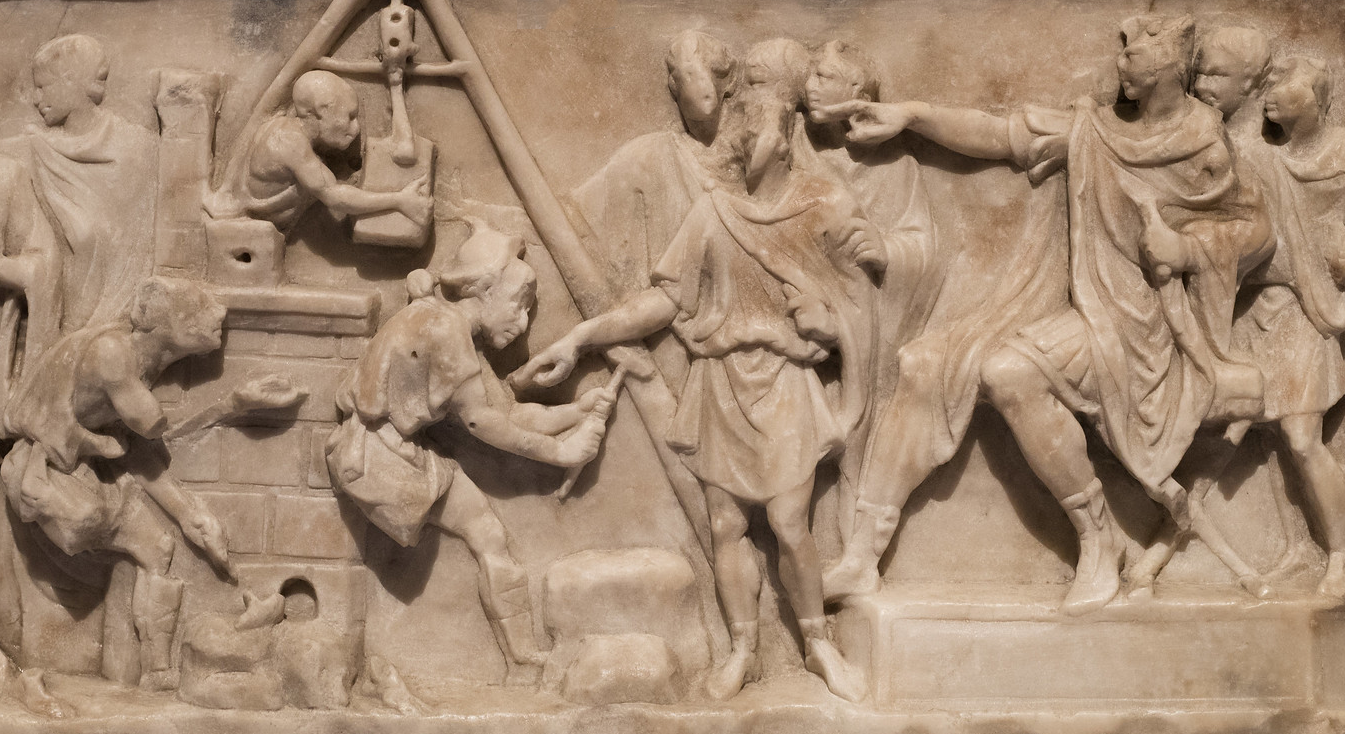
2020
University of Missouri
The Origins of Concrete Construction in Roman Architecture, by Marcello Mogetta of the University of Missouri, published by Cambridge University Press. The publication will investigate the social, economic and environmental circumstances that brought about innovations in building technology in central Italy in the 2nd century BCE, discussing especially the role played by networks of patrons, builders and private entrepreneurs – both Roman and non-Roman. The subvention will support the preparation of illustrations, maps and line drawings, and will cover the fees for image permissions and for a professional indexer.
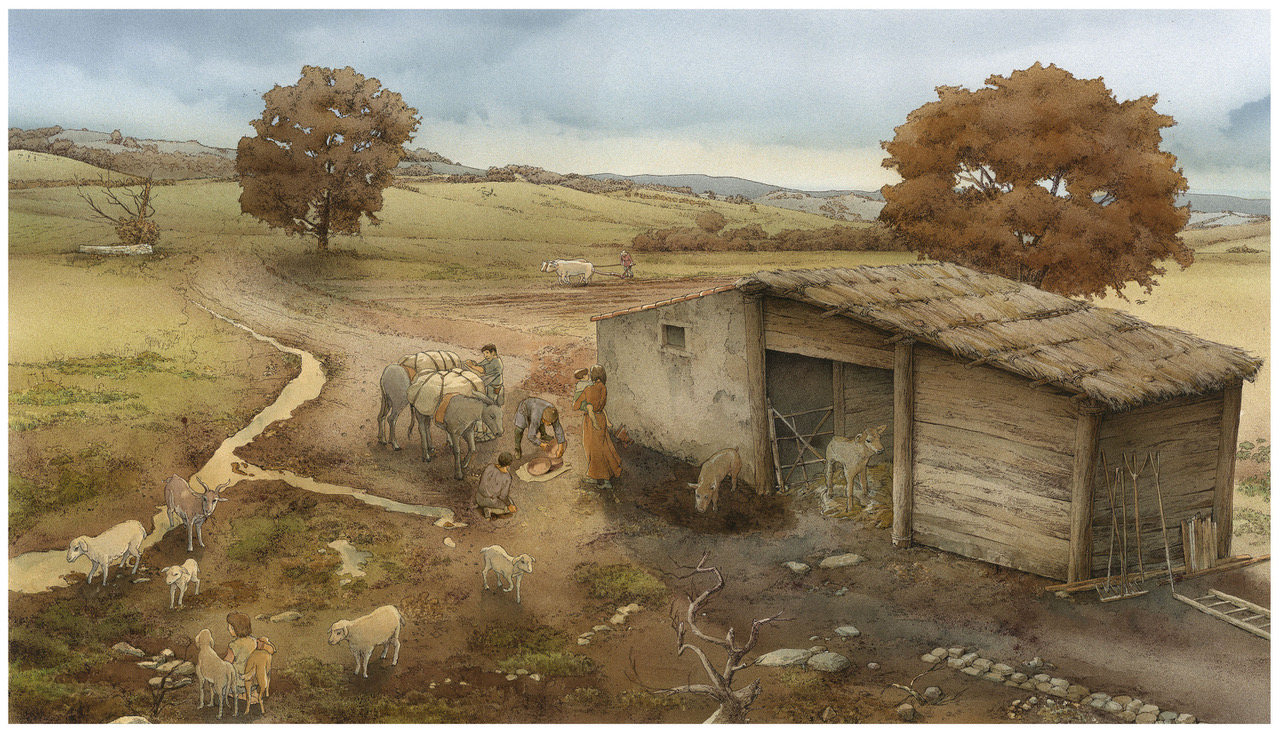
2019
The Roman Peasant Project 2009-2014: Excavating the Roman Rural Poor, edited by Dr. Kimberly Bowes of the University of Pennsylvania, and published by Penn Museum Press/University of Pennsylvania Press. The publication will cover the work of The Roman Peasant Project, with the first volume providing data from eight archaeological excavations in southern Tuscany, Italy, with a second volume of deep analysis of the data. The subvention is requested to offset the cost of the nearly 400 illustrations, and the additional binding costs involved in producing this as a two-volume set.
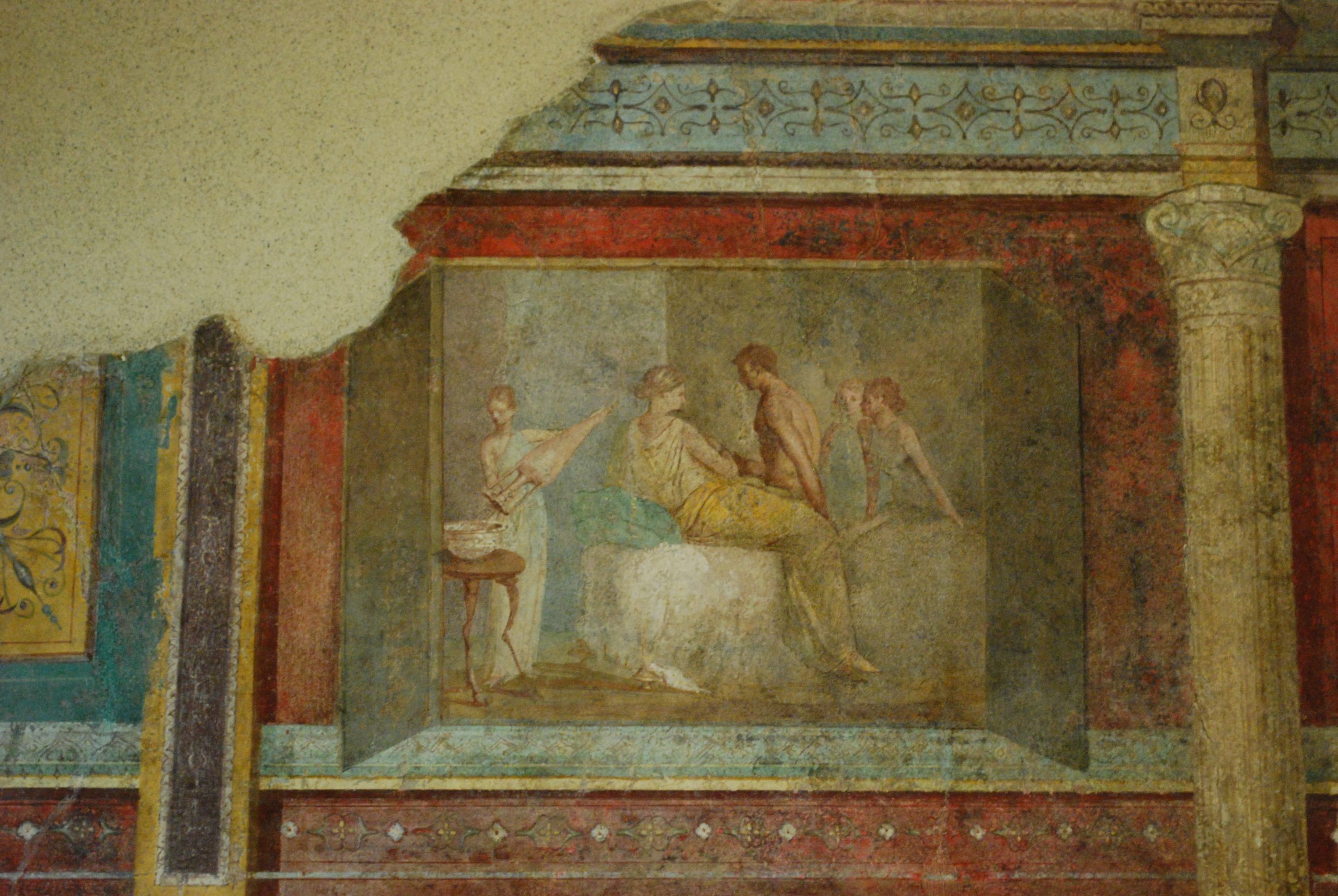
2019
Painting, Poetry, and the Invention of Tenderness in the Early Roman Empire, by Dr. Hérica Valladares of the University of North Carolina, Chapel Hill, and published by Cambridge University Press. This volume examines amatory representations of Roman wall paintings and Latin poetry produced from the late 1st century BCE and the late 1st century CE. Arguing that the emergence of tenderness as a positive virtue can be linked to contemporary changes in Roman social and political life, Dr. Valladares’ study offers new insights into our understanding of Roman private life during a turbulent period of transformation in the late Republic and first century of Empire. The subvention will support the volume’s extensive illustration program.
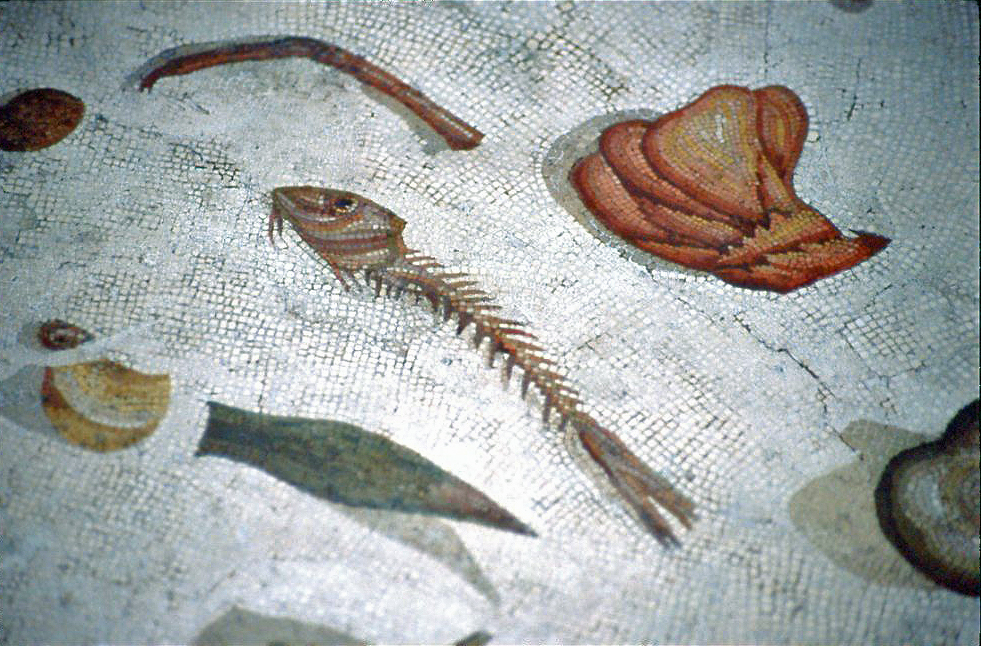
2019
Rhetoric and Innovation in Hellenistic Art by Dr. Kristen Seaman of the University of Oregon, published by Cambridge University Press. Dr. Seaman explores the way in which advances in rhetoric in Greek education before the Hellenistic period shaped art and literature in the Hellenistic age. The Subvention supports the illustration program for Dr. Seaman’s volume.
2019
The Julian Basilica: Architecture, Sculpture, Epigraphy (Corinth XXII) by Paul D. Scotton of California State University, Long Beach, published by the American School of Classical Studies at Athens. In this volume, Professor Scotton explores the architectural and sculptural remains of the Julian Basilica and combines the evidence with research done by co-authors Catherine de Grazia Vanderpool and Carolynn Roncaglia to argue the basilica’s significance to the ancient world. The Subvention will support the volume’s color plates and fold-outs.
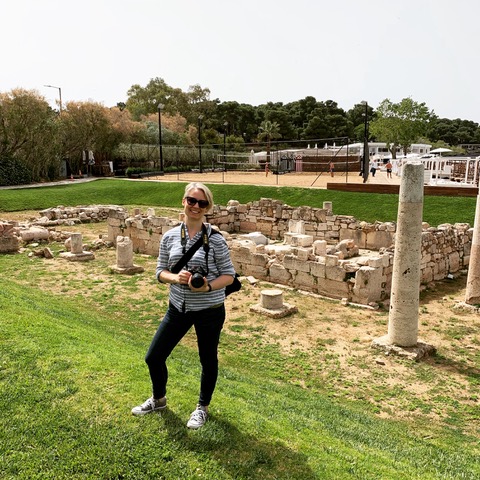
2019
Building Democracy in Late Archaic Athens by Dr. Jessica Paga of Princeton University, published by Oxford University Press. Dr. Paga discusses the built environment and monumental architecture of ancient Athens during the late archaic period to provide an answer as to how Athens transitioned from tyranny to a democracy. Dr. Paga is the recipient of both the Samuel H. Kress Foundation to support the author’s research travel, and the von Bothmer Publication Subvention to support production of the volume’s illustrations.
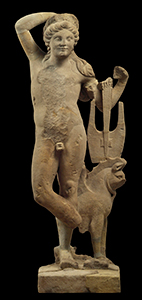
2019
Roman Cult Images: The Lives and Worship of Idols from the Iron Age to Late Antiquity, published by Cambridge University Press. In this volume Dr. Kiernan explores the images that were essential to Roman religious practice over the course of a millennium, using a “life history” approach and an extensive survey of evidence from Roman sites in France and Germany. The Subvention will support the volume’s 95 illustrations.
2019
Meaning in the Making: Creativity in Bronze Age Art, published by Cambridge University Press. Dr. Knappett uses art historical, anthropological, and theoretical approaches to provide a fresh perspective on Aegean Bronze Age art work in all media, offering new insights into the creative process The volume is expected to be a major contribution to our understanding of Aegean Bronze Age civilization.. The Subvention will be used to cover the costs of the full-color printing program used throughout the book.
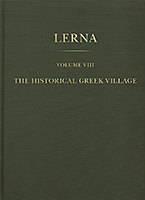
Lerna VIII: The Historical Greek Village by Brice Erickson with University of California Santa Barbara, published by the American School of Classical Studies as part of its series on the work at Lerna. The volume will be the first to shed light on the later phases of activity at this famous prehistoric site. The Subvention will support the inclusion of ten color figures, illustrating the surface treatments on various pottery types, as well as a series of color thin-sections, the latter being vital to the presentation of the petrographic analysis.
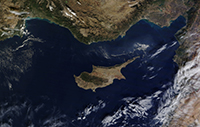
New Directions in Cypriot Archaeology, edited by Dr. Catherine Kearns of the University of Chicago and Dr. Sturt W. Manning of Cornell University, published by Cornell University Press. This volume has two aims, the first being to describe the substantive work being done by a new generation of archaeologists on Cyprus, presenting results from major field projects undertaken by international and Cypriot archaeological teams; the second aim is to act as an informative tool for Mediterranean archaeology more broadly, in terms of teaching and research methods. The Subvention will be used towards manuscript and illustration preparation, copy-editing, and ebook conversion, in order to make the volume more affordable and accessible for course use.
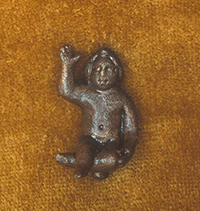
Excavations at Nemea IV: The Shrine of Opheltes by Jorge Bravo, III of University of Maryland, published by the University of California Press. This publication, the fourth and final in the Excavations at Nemea series, focuses on the hero shrine of Opheltes/Archemoros at the ancient Greek site and the associated Nemean Games. The volume collects, surveys, and analyzes all the literary evidence and material remains from the shrine at Nemea from over the past 40 years, making it the most complete analysis of an important Greek religious and athletic site yet published. The Subvention will be used to offset general production costs, including its extensive image program and special design elements.
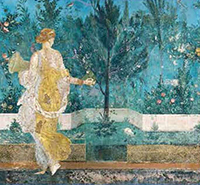
Excavation and Study of the Garden of the Great Peristyle of the Villa Arianna at Stabiae, 2007-2012 by Thomas Howe, published by the Societa Internazionale di Amici di Pompei. The publication is the fourth part of a series entitled Quaderni di Studi Pompeiani (Notebooks of Pompeian Studies), focuses on the ancient Roman coastal town of Stabie, the least studied of all the cities in the area of Vesuvius. The garden at the Villa Arianna is one of the best preserved of all those buried in the well-known explosion of Mt. Vesuvius, and publication of its excavation represents a unique opportunity for general readers to learn about the great peristyle, as well as for experts to learn documentation practices for garden study pre-excavation. The subvention will be used towards costs of impagination, graphic design and printing.
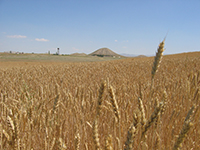
Agricultural Sustainability and Environmental Change at Ancient Gordion: Gordion Special Studies 8 by John Marston of Boston University, published by the University of Pennsylvania Museum. This book addresses the environmental interaction between people and natural landscapes, through a place-based case study of the ancient city of Gordion over a span of nearly 3,000 years. Dr. Marston draws on resilience theory and human behavioral ecology to bring a new focus to the long term history of one of the most important sites of the Eastern Mediterranean in the Iron Age. The Subvention will be used to include an eight-page color signature in the volume.
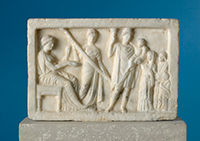
The Athenian Agora: Results of Excavations Conducted by the American School of Classical Studies by Carol Lawton, published by the American School of Classical Studies at Athens. This publication, which will be the 38th volume in its series, contains all the Greek votive reliefs found during excavations of the Athenian Agora. These reliefs were created during the Classical period to the Roman Imperial period; the volume will place these 224 reliefs in the broader context of their time periods as well as use the reliefs to further the understanding of the place of religion in the region surrounding the Agora. With the help of the Subvention grant, the volume will include an 8-page color insert in order to better display and detail the materials, appearances, and locations of the reliefs.
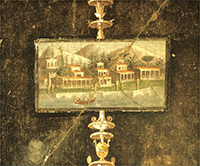
The Roman villa in the Mediterranean basin: Late Republic through Late Antiquity, edited by Annalisa Marzano of the University of Reading and Guy Métraux of York University, published by Cambridge University Press. The publication explores various themes regarding Roman villas, including a comparison of their role in urban and rural areas, their contributions to Roman expansion, and the geographical, chronological, and social scope of the villa. With the help of the Subvention, the publication will include an eight-page color plate section, 313 black and white illustrations, and several maps.
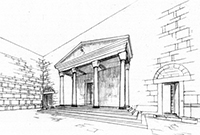
The Archaeology of Byzantine Anatolia: From the End of Late Antiquity to the Coming of the Turks, edited by Philipp Niewöhner, published by the University of Oxford Press. The archaeology of Byzantine Anatolia is of special interest because Anatolia was the only major part of the Roman Empire that did not fall in late antiquity, remaining continuously under Roman rule through the eleventh century. This volume presents the first general and definite overview for all of Anatolia, compiling and evaluating recent archaeological discoveries from many individual sites, providing information that heretofore has been available only in obscure foreign language journals. The Subvention will be used to produce 80 plates which illustrate key archaeological evidence, and to redraw several large regional maps and figures.
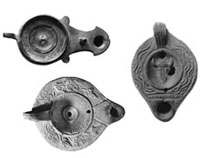
Isthmia X: Lamps from the UCLA/OSU Excavations at Isthmia, 1967-2004, edited by Birgitta Lindros Wohl, part of the series published by the American School of Classical Studies at Athens. The volume will publish over 400 lamps and lamp fragments found over several decades of excavation at the Isthmian Sanctuary of Poseidon, and will serve as a useful and essential addition to Oscar Broneer’s 1977 publication on the terracotta lamps at the site. With the help of the Subvention, the volume will include over 350 illustrations, including maps, line drawings, and color photos.
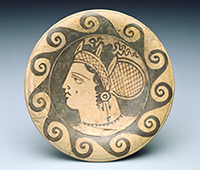
Caere, vol. 1 of the series Cities of the Etruscans, edited by Nancy T. de Grummond of Florida State University and Lisa Pieraccini of the University of California, Berkeley, published by the University of Texas Press. This volume gathers many of the world’s foremost Etruscologists to not only synthesize information on Caere (one of the larger cities of Southern Etruria, modern Cerveteri), but also provide new interpretations. Caere has been more thoroughly excavated than other Etruscan cities, and this large, highly illustrated volume presents the wealth of information provided by the findings. The $5,000 grant will be used to subsidize a color section to supplement the black and white illustrations.
Icon, Cult, and Context: Essays in Honor of Susan B. Downey, edited by Maura K. Heyn and Ann Steinsapir, published by the Cotsen Institute Press. This text honors Susan B. Downey’s meticulous scholarship on the architecture of sacred spaces and objects of ancient Roman civilization, and the imagery contained in those spaces. The contributors, former students and current colleagues of Professor Downey, demonstrate a shared concern for very careful consideration of evidence in their analyses of religious imagery, cult practices and sacred edifices. The articles in this volume provide evidence of Professor Downey’s continuing influence on the disciplines of art history and archaeology. The $5,000 grant will be used towards color illustrations, permission fees, and the production of the volume in hardcover.
The Archaeology of the Black Sea in Classical Antiquity, edited by Valeriya Kozlovskaya, published by Cambridge University Press. In recent years, archaeologists have recognized the importance of waterways, and particularly how coastal communities relate to the sea, each other, and inland communities. This publication specifically addresses the issues of identity along the northern Black Sea coast while focusing on the archaeology of the northern Black Sea civilizations between 700 B.C. and 300 A.D. The book will make available the research of Russian scholars to the Anglophone audience for the first time. The $2,500 grant will be used towards enhancing the publication’s illustrations and maps.

The Use and Abuse of Images in Ancient Greece, by Rachel Kousser of Brooklyn College (CUNY), published by Cambridge University Press. This volume is the first comprehensive historical account of the afterlives of Greek monumental sculptures, in which Dr. Kousser uses archaeological and textural evidence to reconstruct the processes of damage, repair, and reparation that characterized the lives of images in the Classical and Hellenistic period. The $3,500 Subvention will cover the costs of 10 color plates and an additional 50 black and white illustrations.
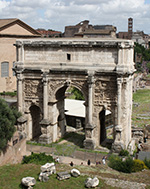
The Architecture of the Roman Triumph: Monuments, Memory and Identity, by Maggie Popkin of Case Western Reserve University, published by Cambridge University Press. Drawing on art historical and archaeological perspectives and memory studies, Dr. Popkin examines how monuments shaped the way Romans conceived of the triumph, and by extension, their understanding of “Romanness”. The $2,500 Subvention will be used toward production costs of a color plate section and additional half-tone illustrations.
The Bioarchaeology of Classical Kamarina: Life and Death in Greek Sicily, by Carrie L. Sulosky Weaver of the University of Pittsburgh, published by the University Press of Florida. This volume will be one in the series Bioarchaeological Interpretations of the Human Past: Local, Regional, and Global Perspective, edited by Clark Spencer Larsen of Ohio State University. With access to 258 of the 1,007 recovered burials at the Greek site of Kamarina, Dr. Weaver provides the first comprehensive examination of a Greek Necropolis in Sicily; hers is one of the first works to combine the sub-disciplines of classical archaeology and physical anthropology. The $5,000 Subvention will be used to cover indexing and copy-editing costs.
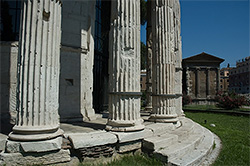
Architecture and Politics in Republican Rome, by Penelope J. E. Davies of the University of Texas at Austin, published by Cambridge University Press. In this work, Dr. Davies examines the architectural evolution occurring in Rome during the Republic, arguing that the Republic’s government and its buildings were inextricably intertwined. The volume challenges previous beliefs that little evidence of early Roman architecture still exists, and by combining evidence from little known excavations, Davies provides substantial accounts for building trends in all phases of the city’s development. The $5,000 subvention will be used towards the volume’s illustrations, which include photographs, maps, plans, and reconstructions.
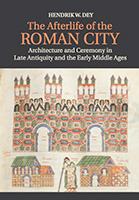
Architecture, Ceremony and the Afterlife of the Roman City, AD 250 – 850, by Hendrik W. Dey of Hunter College, published by Cambridge University Press. In this work Dr. Dey examines the network of cities that spanned the Roman Empire, and their development in late antiquity. Using material evidence from several key sites (Rome, Milan, Ravenna, and Constantinople), he argues that these urban centers not only survived in the post-classic period, but continues to thrive and function as they did during the Empire. The $3,000 Subvention will be used towards the production of halftone illustrations and color plates for the volume.
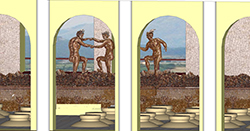
Villa Magna: an Imperial Estate and its Legacies. Excavations 2006 – 2010, by Elizabeth Fentress et alia, and published by The British School at Rome as part of its monograph series. This work provides interpretation of primary data from the excavations of the Villa Magna at the foot of Monte Lepini, from its inception under Hadrian, and the monastery, village and castrum that developed on the site in the Middle Ages. The publication will be of importance to scholars of Roman and Medieval Italy, expanding knowledge of imperial behavior and of the region in general. The Subvention of $5,930 will be used towards general production costs and color illustrations, an accompanying website, and towards keeping down the sale price of the volume.

The House of Sallust in Pompeii, VI 2, 4, by Anne Laidlaw et alia, published by the Journal of Roman Archaeology. The volume is the first substantial publication of the House of Sallust in Pompeii and provides the primary documentation for the work at the site. Earliest excavations of the house occurred between 1763 and 1809 and this book analyzes all of the accumulated evidence in order to make clear what can be said about building phases and dating. The $4,309 Publication Subvention will be used towards extensive color illustrations, color photomosaics of the house façade and a cross-section of the atrium, and large folding plans of the house.
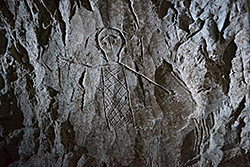
Writing on the Wall: Graffiti and the Forgotten Jews of Late Antiquity, by Karen B. Stern of Brooklyn College (CUNY), published by Princeton University Press. The volume examines graffiti produced by Jews in antiquity, and is the first full-length treatment of the material. Hundreds of examples have been found in burial caves, around pagan temples and inside synagogues, in theatres, and in markets throughout the Mediterranean world, helping to illuminate features of daily life otherwise unattested in literary, epigraphic, and archaeological sources. The $2,500 Subvention will be used towards illustration preparation, fees for map preparation, and permission costs.
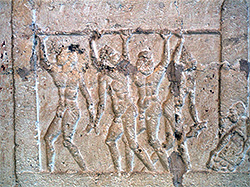
Imaging the Afterlife: Negotiating Death in Graeco-Roman Egypt, by Marjorie Venit of the University of Maryland, published by Cambridge University Press. Dr. Venit examines the culture of death and commemoration of the dead that evolved after Egypt came under Greek rule in the late fourth century BC, focusing in particular on a series of decorated monumental tombs that were created from c. 300 BC to 250 AD. Her analysis shows concrete evidence for the interchange of ideas about death and the afterlife among the two major population groups of Graeco-Roman Egypt, as well as a unique perspective on the problems posed by cultural identification, assimilation, and differentiation between the two cultures. The $5,000 Subvention will be used towards the extensive illustrations (188 black & white illustrations and 8 color plates).
The Sanctuary of Demeter at Eleusis: The Bronze Age by Michael B. Cosmopoulos of the University of Missouri at St. Louis, and published by the Athens Archaeological Society. The volume constitutes the complete and final publication of the extensive Bronze Age finds from past excavations, allowing the Sanctuary and materials to be viewed as a unified whole for the first time, and shedding new light on the early life and development of this important site and of the Eleusinian cult. The volume has been awarded a $3,500 Subvention, and is also receiving a $3,000 Samuel H. Kress Grant for Research and Publication in Classical Art and Architecture; the funds will be used towards the costs of printing and bookbinding.
Shaping Ceremony: Monumental Steps and Greek Architecture, by Mary B. Hollinshead of the University of Rhode Island, and published by the University of Wisconsin Press. The volume is part of the Wisconsin Studies in Classics series, and employs an innovative methodology that combines architectural theory and biomechanical insights to examine monumental steps in Greek architecture. Such steps have long been associated with autocratic and imperial power, but the author argues that they were instead most likely used for processions and assemblies that involved Greeks of varying status at festivals and similar gatherings. The $5,000 Subvention will be used for the commissioning of 20 plans for the volume, and for permission fees for image use.
The Roman Aqaba Project Final Report, Volume 1: The Regional Environment and the Regional Survey, by S. Thomas Parker of North Carolina State University, and published by the American Schools of Oriental Research as part of their Archaeological Report Series. The volume will present primary data from Aila at Aqaba, a major trade hub of the Roman Empire with the Red Sea regions and beyond, and a port which flourished from Nabatean times through Roman, and into the early Islamic period. The report will offer a valuable resource for scholars of Roman studies and economic historians, with implications for efforts in heritage management. The $5,000 Subvention will be used for various production costs, including typesetting and printing.
Egypt in Italy: Visions of Egypt in Roman Imperial Culture by Maria Swetnam-Burland of the College of William & Mary, and published by the Cambridge University Press. In this volume the author examines the role of Egyptian art in Roman politics, religion, and visual culture in the period after Rome’s conquest of Egypt in 30 B.C.; in particular she focuses on the significance and appeal that Egyptian objects and artwork held for Roman viewers, what they reveal about Roman ideas of imperialism and geographical expansion of empire, and what the Roman taste for Egyptian objects tells us about what they knew (or thought they knew) about Egyptian history. The $3,500 award will be used to commission an archaeological illustrator to create new line drawings, maps, and plans, illustrating aspects of key buildings in the study, and showing them in a new light.
Samothrace: The Monuments of the Eastern Hill (Samothrace Vol. 9) by Bonna D. Wescoat of Emory University, et. al., and published by the American School of Classical Studies in Athens as part of their series Samothrace, excavations conducted by the Institute of Fine Arts of New York University. In this substantial volume the key monuments that form the Sanctuary of the Great Gods’ theater complex, including the theater circle, the fieldstone building, the marble Doric hexastyle dedication of Philip III and Alexander IV, the later Ionic porch, and the remains of dozens of bronze statues that originally framed the circle, are presented in the archaeological, architectural, and historical contexts. The Subvention of $7,500 will be used towards the cost of publishing the plates in a separate volume from the text.
Heroic Offerings: The Terracotta Plaques from the Sanctuary of Alexandra/Kassandra and Agamemnon at Amyklai, by Gina Salapata and published by the University of Michigan Press. The volume will present Professor Salapata’s detailed analysis of the terracotta plaques deposited at the Sanctuary of Amyklai, and place them in their relation to stone reliefs from other sites in Lakonia. Much of the Lakonian votive material that is examined has not been published before. The $2,500 subvention will be used for direct publication costs.
Corinth XXI, A Slice through Time: Tombs along the North Terrace at Corinth, by Kathleen Warner Slane (additional contributors are Ethne Barnes, David S. Reese, and David R. Jordan), published by the American School of Classical Studies at Athens as volume XXI of the ASCSA’s own Corinth monograph series. The volume will present materials found during rescue excavations in the early 1960s, including tile graves, limestone sarcophagi, cremation burials, and chamber tombs; the purpose of the work is to publish the excavations and to examine the evidence of changing burial practices at the site other time (5th century B.C. to 6th century A.D.), from Greek city to Roman colony, and as its population became Christian. The $5,000 subvention will be used to produce the volume at the same quality of the rest of the Corinth series.
2012
Couched in Death: Klinai and Identity in Anatolia and Beyond by Elizabeth Baughan, published by the University of Wisconsin Press as part of the Wisconsin Studies in Classics series, is the recipient of the 2012 Publication Subvention. Professor Baughan’s volume is a study of ancient furniture, specifically the klinai (couches) found in Anatolian tombs, and is the first comprehensive study of funeral beds and couches in 6th and 5th century Asia Minor with analysis of their social and cultural significance. The $2,500 subvention will be used for image reproduction fees.
2011
Leptiminus (Lamta): a Roman Port Town in Tunusia. Report no. 3: The Field Survey by David L. Stone, David J. Mattingly, and Nejib ben Lazreg (eds.) is the recipient of a 2011 AIA Publication Subvention Grant. The volume is being published by the Journal of Roman Archaeology, as part of their Supplemental Series. The third of the Leptiminus fieldwork reports, this volume will cover work done from 1990 to 1999, spanning Neolithic to medieval and modern periods, with particular emphasis on the thriving 2ndto 3rdcentury A.D. town. The $6,190 subvention will be used to cover the costs of accompanying CDs (containing gazetteers of the sites in the Urban and Rural Surveys), and color images in the volume.
2011
Shelley Wachsmann is the recipient of a 2011 AIA Publication Subvention for his volume on The Gurob Ship-Cart Model and its Mediterranean Context, published by the Texas A&M University Press. The Gurob model represents a remarkable Bronze Age Greek galley, for which a full-scale example is yet unknown. Professor Wachsmann’s work seeks to place the ship type in context, including what it reveals about the identity and culture of the Sea Peoples, the religious practices of ancient Egypt and Greece, and the kinds of vessels that Bronze Age Greece used to extend trade and influence throughout the Mediterranean world. The $7,500 subvention will be used towards direct publication costs for the volume.
2010
Joseph L. Rife is a 2010 recipient of the Publication Subvention Grant, for his Isthmia IX: The Roman and Byzantine Graves and Human Remains. The volume is the ninth volume in the American School of Classical Studies at Athens’ series on Isthmia, one of the four great Panhellenic sanctuaries. The book is a detailed study of the finds from this key site, integrating funerary evidence and skeletal biology to shed needed light on a period of transition for both urban and rural communities in the northeastern Peloponnese. Professor Rife is with the Department of Classical Studies at Vanderbilt University, and this is his first published book. The $5,000 subvention will be used to help produce this 600-page monograph at the same quality as the other volumes in the series.
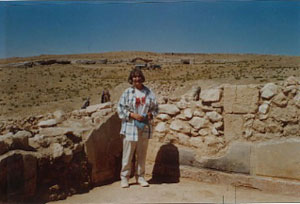
2009
The 2009 recipient of the AIA’s Publication Subvention is Heather Jackson for Jebel Khalid on the Euphrates, Volume III: The Pottery, which she is co-authoring with John Tidmarsh. Dr. Jackson is an Honorary Fellow with University of Melbourne, and has authored other forthcoming volumes in the series including the reports on terracotta figurines and on the housing insula. A Hellenistic site on the west bank of the Euphrates in Northern Syria, the Jebel Khalid was excavated from 1985 through 2005 in a joint effort by the Australian National University and the University of Melbourne. This volume (published as a supplemental volume to Mediterranean Archaeology) will be the third report from the excavations, and the Subvention will defray the costs of the illustrations, copy editing and printing.
2008
The recipient of the 2008 Publications Subvention Grant is Matthew Canepa for his volume The Two Eyes of the Earth: Competition and Exchange in the Art and Ritual of Kingship between Rome and Sansanian Iran, published by the University of California Press. Professor Canepa is with the College of Charleston, Department of Art History, Programs in Archaeology and Asian Studies. A specialist in the art and cultures of the late Roman Empire and Pre-Islamic Iran, Professor Canepa’s research focuses on cross-cultural interaction in the ancient world. His new volume will be the first to analyze the artistic, ritual and ideological interactions between the Roman and Sasanian empires in a comprehensive and theoretically rigorous manner.
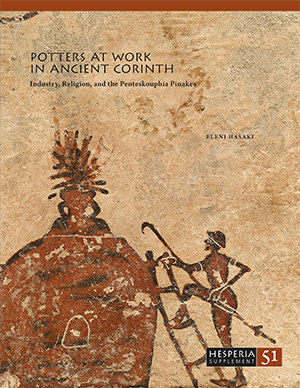
2007
University of Arizona
The recipient of the 2007 AIA Publications Grant was Eleni Hasaki for her volume Potters at Work in Ancient Corinth: Industry, Religion, and the Penteskouphia Pinakes (Hesperia Supplement 51; American School of Classical Studies at Athens, Princeton, N.J). Ancient Corinth was unquestionably a major ceramic production center during the seventh and sixth centuries B.C.E., and it was the Corinthian potters of the first half of the sixth century BCE who left us a visual compendium of their daily life in ceramic workshops. Dr. Hasaki’s monograph unites the iconography, epigraphy, topography, and religion depicted on more than one hundred terracotta plaques from Corinth showing the inner workings of the potters’ craft, from collecting clay and fuel, to forming a vessel, and to tending the kiln.
Read more